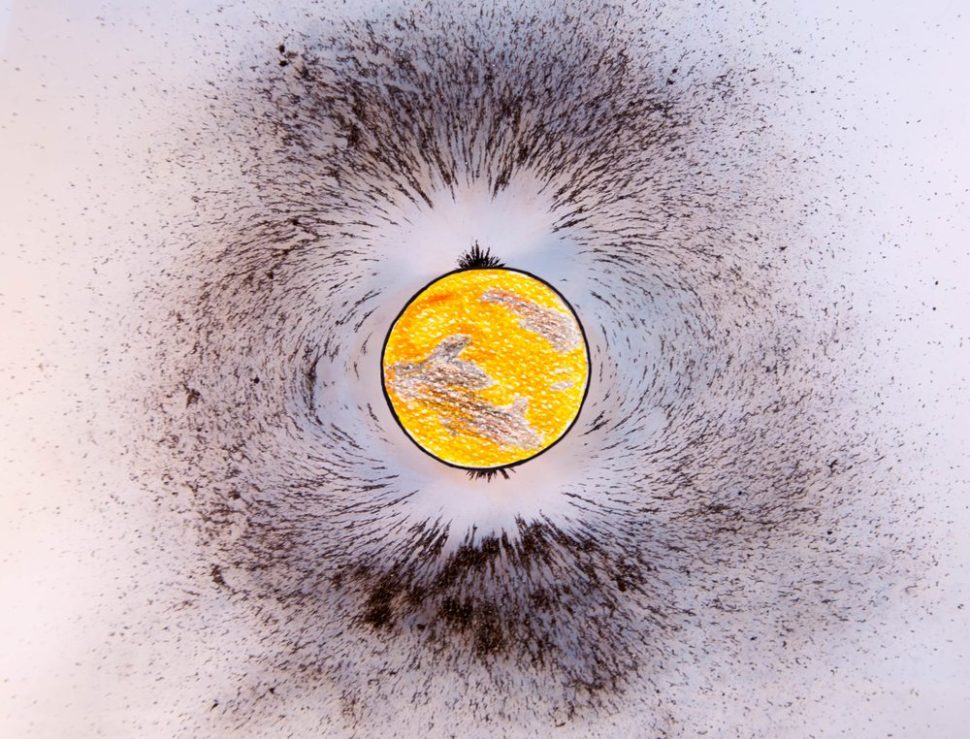Thanks to MAVEN, NASA scientists discovered that Mars has a hidden magnetic tail that gets twisted when it comes in contact with solar winds.
Billions of years ago, Mars had a dense magnetic field similar to Earth’s. Sadly, solar winds have swept off most of it, turning Mars into a desolate wasteland.
New data from MAVEN suggest that this same solar wind that caused the loss of the Mars atmosphere and surface water enabled the creation of a twisted magnetic tail.
Solar wind caused Mars' magnetic tailClick To TweetMAVEN, Unraveling Mars Past
While rovers roam the Mars surface looking for clues that help uncover its secrets, MAVEN is orbiting the planet to provide explanations for its atmosphere and water–or lack thereof.
Long before dreaming of building its “Martian Base Camp”, Lockheed Martin has partnered with NASA on many projects, including the building of the MAVEN spacecraft (Mars Atmosphere and Volatile Evolution).
Launched on November 18th, 2013 by an Atlas V rocket, the NASA’s MAVEN spacecraft reached Mars during the night of September 21st, 2014.
Orbiting the planet since then, Maven continued its mission of exploring the upper Martian atmosphere to understand why this vital envelope was blown away–eventually disappearing into the void.
Orbiting Mars, MAVEN continually changes its orientation in regard to the Sun to create an exhaustive map of the small Martian magnetic fields and their interaction with the solar wind.
How the sun Caused Mars’ Unique Magnetotail?
Between October 15th and the 20th, the 49th DPS Meeting (annual meeting of the American Astronomical Society’s Division for Planetary Sciences) was held in Provo, Utah.
At a press briefing on Oct. 19th, as part of the 49th DPS Meeting, Gina DiBraccio, of NASA’s Goddard Space Flight Center, presented a report with new details regarding the MAVEN mission.
“We found that Mars’ magnetic tail, or magnetotail, is unique in the solar system,” said Gina DiBraccio who’s part of the team behind MAVEN project. “It’s not like the magnetotail found at Venus, a planet with no magnetic field of its own, nor is it like Earth’s, which is surrounded by its own internally generated magnetic field. Instead, it is a hybrid between the two.”
According to MAVEN scientists, this Martian twisted tail is a result of a process they call “magnetic reconnection”, when the magnetic fields brought by the solar wind connect to magnetic fields embedded on the surface of the planet.
Continuous streams of electrically-charged plasma (solar wind), emitted by the Sun at about one million mph, had reduced Mars’ global magnetic field into magnetic shreds hanging on the surface in some regions.
Mars could be the “future” of Earth. Besides being a potential and relatively viable destination to host a human colony, it could also provide hints at what the future of our own aging planet could be.
Just like Earth, Mars lies in the so-called “habitable zone” of the Sun, so the two planets are, under different conditions of pressure and temperature, subject to similar effects from solar winds and plasma eruptions.
However, unlike Mars, Earth has a powerful internal dynamo that keeps the magnetic field close, protecting the atmosphere, and us, from the devastating whims of our home star.
This discovery, and others in the future, could help NASA advance its plan of creating an artificial magnetic shield to restore the magnetic field and atmosphere of Mars in order to terraform it.



















Comments (0)
Most Recent